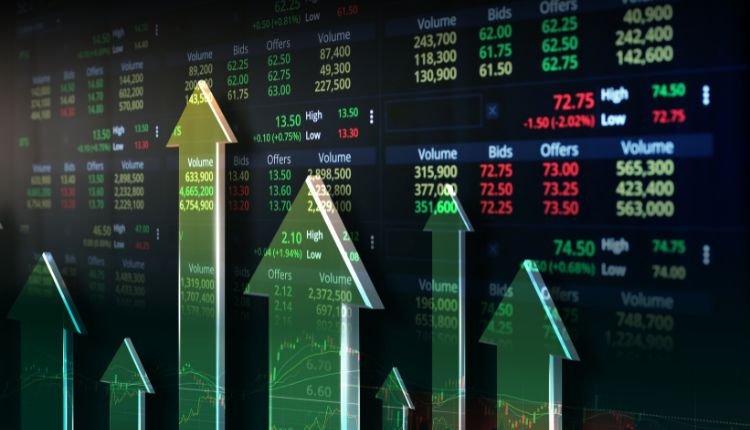What’s a Normal Profitable Trader Winning Rate?
Imagine placing trade after trade, seeing some wins and some losses, and wondering—what percentage of successful trades is considered “normal” for a profitable trader? Many aspiring traders believe that a high winning rate guarantees profitability, but the truth is more complex.
Understanding what’s a normal profitable trader winning rate is crucial because it helps traders set realistic expectations, refine their strategies, and manage risk effectively. A winning rate alone doesn’t determine success; factors like risk-reward ratio, market conditions, and strategy execution play a significant role.
In this article, we’ll explore what a normal winning rate looks like for profitable traders across different trading styles, backed by data, expert insights, and real-world examples. Whether you’re new to trading or refining your approach, gaining clarity on this metric can help you build a more sustainable and profitable strategy.
Understanding Winning Rates in Trading
The winning rate in trading is a fundamental metric that traders use to measure success. It represents the percentage of trades that result in a profit versus the total number of trades executed. However, a high winning rate does not necessarily mean profitability—other factors like risk management and position sizing play a crucial role.
Definition of Winning Rate
In trading, a winning rate refers to the percentage of trades that end in profit compared to the total trades taken. It is calculated using the formula:
Winning Rate (%) = (Number of Winning Trades ÷ Total Trades) × 100
For example, if a trader executes 100 trades and 55 of them are profitable, their winning rate is 55%. While a higher winning rate might seem ideal, profitability depends on other factors like the risk-reward ratio.
Importance of Winning Rate for Traders
Risk Management
Knowing your winning rate helps with risk assessment. Traders with a lower winning rate must ensure their average profits per trade outweigh their losses to remain profitable.
Strategy Evaluation
A trader’s winning rate is an essential tool for assessing strategy effectiveness. If the winning rate is too low, it may indicate a need for adjustments in entry and exit points, stop-loss placement, or market conditions.
What Constitutes a ‘Normal’ Winning Rate?
A common question among traders is: what’s a normal profitable trader winning rate? The truth is, there’s no universal number. A profitable trader’s winning rate varies based on trading style, market conditions, and individual strategies. Some traders remain profitable with a lower winning rate, while others require a higher one to succeed.
Let’s examine industry benchmarks and the key factors that influence winning rates.
Industry Benchmarks and Averages
Data Insights
Studies suggest that profitable traders typically maintain a winning rate between 40% and 60%. While it might seem low, profitability depends on the risk-reward ratio—a trader with a 40% win rate can still be highly profitable if their winning trades yield twice the amount of their losing ones.
Case Study
A research report by Fidelity Investments highlights that successful traders prioritize consistent risk management over achieving an exceptionally high win rate. The study found that traders with a win rate of around 50% and a strong risk-reward ratio tend to be more consistently profitable than those focusing solely on maximizing winning trades.
Factors Influencing Winning Rates

Trading Style
- Scalping & Day Trading: Typically have a higher win rate (60-80%), but profits per trade are smaller.
- Swing Trading: Winning rates range from 40-60%, as trades are held longer for larger gains.
- Position Trading: Often lower win rates (30-50%) but with higher reward potential.
Market Conditions
Winning rates fluctuate based on market trends:
- Trending markets favor traders who follow momentum-based strategies.
- Choppy markets reduce win rates as price movements are unpredictable.
Trader Experience
Beginner traders may have lower winning rates (under 40%) due to learning curves, while experienced traders fine-tune their strategies to maintain consistent profitability, even with a win rate below 50%.
Balancing Winning Rate and Risk-Reward Ratio
A high winning rate alone doesn’t guarantee profitability in trading. Many traders with lower winning rates still succeed by managing their risk-reward ratio effectively. The key is finding a balance between how often you win and how much you win compared to how much you lose.
The Risk-Reward Trade-off
The risk-reward ratio (R:R) measures how much potential profit a trade offers relative to the risk taken. It’s calculated as:
Risk-Reward Ratio = Average Profit per Trade ÷ Average Loss per Trade
For example, a trader with a 40% winning rate can still be profitable if their average win is twice their average loss (a 1:2 risk-reward ratio). If they risk $100 per trade but make $200 on winning trades, they remain profitable even with fewer successful trades.
This concept highlights that a lower winning rate doesn’t mean failure—it’s about maximizing rewards while minimizing losses.
Finding the Optimal Balance
Achieving a profitable balance requires:
- Setting a Favorable Risk-Reward Ratio – Aiming for a 1:2 or higher R:R can help traders stay profitable even with a lower win rate.
- Adjusting Trade Size and Stops – Managing position sizes and using stop-losses effectively ensures controlled risks.
- Focusing on Quality Over Quantity – Taking fewer but higher-quality trades with a strong risk-reward setup increases profitability.
- Emotional Discipline – Sticking to a well-defined strategy rather than chasing high winning rates prevents impulsive losses.
By prioritizing risk-reward over just the number of wins, traders can sustain long-term profitability.
Real-World Examples and Case Studies
Successful trading isn’t just about winning rates—it’s about how traders manage risk, stick to strategies, and adapt to market conditions. Many profitable traders have lower-than-expected win rates but thrive due to smart risk management.
Successful Traders with Varying Winning Rates
Profiles
- Trader A: A day trader with a 65% winning rate, using a 1:1.5 risk-reward ratio, making steady profits.
- Trader B: A swing trader with a 45% winning rate, applying a 1:3 risk-reward ratio, still profitable despite fewer wins.
- Trader C: A long-term investor with a 30% win rate, but each successful trade yields 5 times the risk taken.
Analysis
These traders succeed because they prioritize consistency, risk management, and disciplined execution rather than just maximizing winning trades.
Lessons Learned from Trading Failures
Case Studies
- Trader X: Had an 80% win rate but used a 1:0.5 risk-reward ratio, meaning their losses outweighed their wins over time.
- Trader Y: Ignored stop-losses, leading to one large loss that wiped out multiple small gains.
Insights
These cases highlight that risk management, emotional control, and discipline are more critical than simply achieving a high win rate.
Improving Your Winning Rate

A trader’s winning rate is not fixed—it can be improved with the right strategies, continuous learning, and effective use of trading tools. While a high winning rate is beneficial, traders must also focus on risk management and consistency to achieve long-term profitability.
Continuous Learning and Adaptation
Education
Successful traders dedicate time to ongoing education. Staying updated with market trends, trading strategies, and economic news helps refine decision-making. Books, courses, and market analysis from professionals provide valuable insights to improve trade accuracy.
Adaptability
Markets are dynamic, and static strategies lead to losses. Traders must analyze past performance, adjust their strategies based on real-time data, and refine their approaches based on market conditions. Regular backtesting of strategies helps identify what works best.
Utilizing Tools and Resources
Technology
Leveraging technology improves trade precision. Traders should use:
- Trading journals to track past trades and identify patterns.
- Analytical software like TradingView or MetaTrader to assess entry and exit points.
- Automated alerts to stay updated on potential trade opportunities.
Utilizing these tools can significantly enhance decision-making and execution.
Conclusion
A trader’s winning rate alone does not determine profitability—it must be balanced with a solid risk-reward ratio, disciplined risk management, and a structured trading strategy. The average winning rate varies based on the trader’s style, experience, and market conditions, but profitability comes from consistency and effective risk management.
Rather than chasing a high win rate, traders should focus on developing strong risk control measures, refining their strategies, and continuously learning. Even with a moderate winning rate, a favorable risk-reward ratio and disciplined execution lead to sustainable success.
By combining strategy, risk control, and adaptability, traders can navigate the markets more confidently and achieve long-term profitability.
FAQs
What is a typical winning rate for professional traders?
Professional traders often have winning percentages ranging from 50% to 55%, emphasizing the importance of managing losses and ensuring that winners outweigh losers.
Can a trader be profitable with a low winning rate?
Yes, traders can be profitable with a winning rate as low as 30% if they maintain a favorable risk-reward ratio, ensuring that gains on winning trades significantly exceed losses on losing ones.
How can I improve my trading winning rate?
Improving your winning rate involves continuous education, adapting strategies based on performance analysis, and utilizing tools like trading journals and analytical software to track and enhance performance.
Is a high winning rate the most important factor in trading success?
No, a high winning rate doesn’t guarantee profitability. Effective risk management and a favorable risk-reward ratio are crucial, as even traders with lower winning rates can be profitable if their average gains surpass average losses.
What role does risk-reward ratio play in trading?
The risk-reward ratio measures the potential profit of a trade relative to its potential loss. Balancing a winning rate with a favorable risk-reward ratio is essential for achieving consistent profitability in trading.







